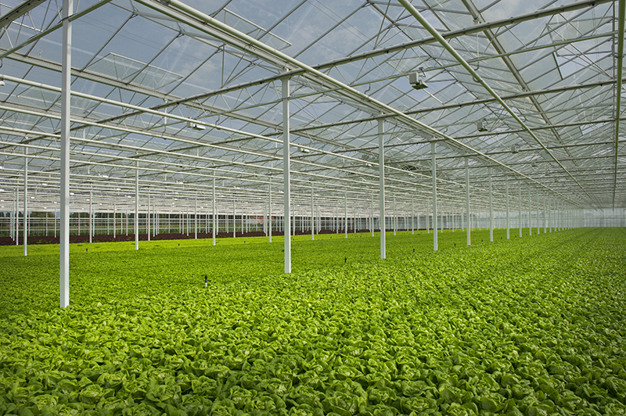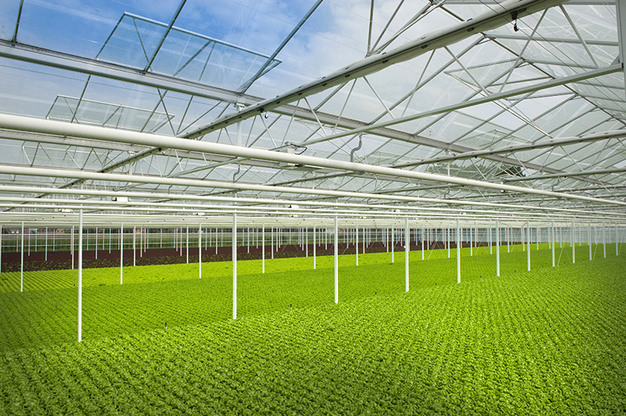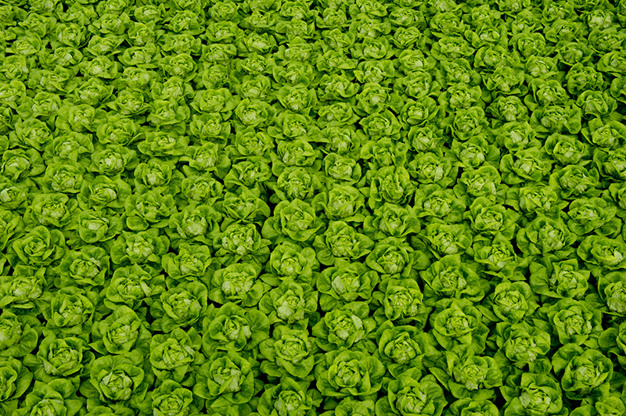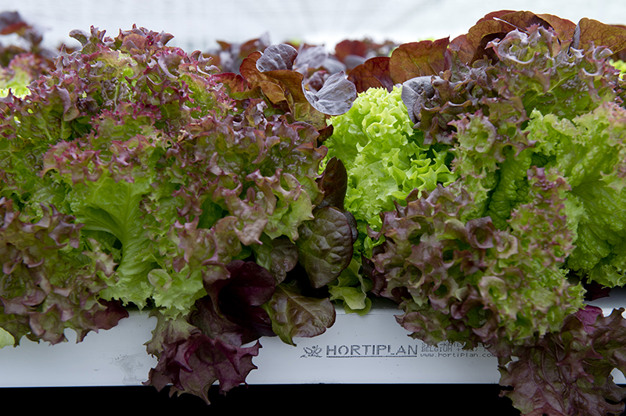With 20,000 employees, Taylor Farms is one of the biggest players in the North American outdoor market. Last month, the company announced an investment in lettuce company Pure Green Farms. Only two weeks before, their Canadian colleague VegPro also announced their plans to build a greenhouse. According to Kurt Cornelissen of Hortiplan, we can expect more of this kind of news. "I believe it indicates a trend. There are a number of things that are coming together at the moment."

Kurt sees that the same development started 20 to 25 years ago in Europe. As sales & business development manager at Hortiplan, a company that supplies mobile gutters for growing lettuce on water, he knows this market like the back of his hand. "A large part of the Dutch and Belgian production of leafy crops in the open air has gradually disappeared and been replaced by production under glass. At the same time, leafy crops are still partly grown in the open in Spain. In particular, a large proportion of European winter consumption still comes from Spain, as does the product that is cut and the packaged range."
Food safety
What is remarkable about this evolution in the US is that it involves huge volumes. "And that it's an evolution that will probably take place in a short time," Kurt says, explaining that a number of issues come together. "Food safety is one of them."
He explains that food safety in Europe is often related to plant protection products and residues, whereas in America it is primarily a microbiological issue. "Chemical substances play less of a role there. More important is the risk of food poisoning: E.coli, Salmonella, Listeria," he lists. "By growing under glass, you also get a very pure product. There is no contamination with sand, no foreign objects, stones or defects. No stray snails or grasshoppers. So the crop needs to be washed less or not at all, which extends its shelf life considerably."

Local production
Another important driver is the trend towards local production. "America First," Kurt clarifies. "That can be translated on several levels. It can be about growing in the US instead of growing in Canada or Mexico, it can be about growing within the borders of a state and it can even go as far as stating the village or town where a farm is located."
Then there are additional circumstances. The water shortage in California, for example, does not make growing conditions there any easier. Transport is also currently a major problem in the United States. "It is not the main reason, but certainly an element in the consideration that companies make. Just like creating jobs: various counties in the US welcome you with open arms if you create jobs and it helps to make a region less dependent on the import of vegetables."

Extremely sexy sector
All in all, there are plenty of reasons for a large number of companies to put a lot of money into greenhouse horticulture. "Greenhouse horticulture is currently extremely sexy among investors. A lot of money is flowing into the sector and a lot of that money is going into the production of leafy crops."
Kurt sees the emergence of players that are smaller in area, with projects of a few hectares, but who have an immediate presence in several states. "The volume of production relative to all the open field companies may be low, but they are companies that seem to be popping up like wildflowers." And that is also what the company sees. In at least 15-20 states, initiatives are underway to get lettuce projects off the ground. Literally, because they are looking at hydroponic cultivation systems like Hortiplan's to produce their product safely and sustainably.
These developments have also forced the large outdoor companies to play catch-up. Some choose to install their own greenhouses, others take over existing companies or form partnerships. "I can imagine that a company which grows in the open ground works according to a different logic than one which grows on a small area in a greenhouse. Maybe it is easier to form an alliance than to have to set it up yourself," Kurt explains.
Effects on the sector
How will this large-scale growth affect the sector? "The current players in the indoor lettuce market started relatively small and have been around for a while. Gotham Greens, Brightfarms: they started by supplying hyperlocal product, near cities or even in the cities themselves. In the course of time, they have expanded their brand. Partly due to the proximity of the market, this went well. Now they are slowly rolling out that concept in other states."
The question is whether that is still the right approach for entrepreneurs starting out now. "If you want to start locally and deliver to the local supermarket, that's still an option," Kurt observes. "But we do see other companies popping up, wanting to develop their facilities in different states at short notice. Then you don't have the time to build your own brand." The alternatives? "Going white label to supply supermarkets, or joining the larger consortiums like Mucci, Village Farms or Mastronardi, for example."

Role of California
How long will this boom last? Unfortunately, Kurt can't see into the future. "But if you look at how much product is coming into the United States from Canada and Mexico and how much leafy greens are being shipped from California and Arizona to the eastern states, you're talking about huge volumes. If a significant percentage of that is replaced, you are already talking about gigantic areas. With 100 hectares of greenhouse, you are barely making a dent in it," says Kurt.
So what is left for California? Again, Kurt looks at Europe. "Here you can see that Murcia remains important as the winter garden of Europe when it comes to leafy vegetables. For rocket, Italy is still a strong player. The opportunities in the market for covered cultivation in the US lie mainly at the top end of the market, the premium segment. But not everyone is going to buy expensive, pre-packaged lettuce. Below that, there are still opportunities for the cheaper head of iceberg lettuce grown in California or Arizona."
At the same time, he also sees that if the market continues to invest at this high rate in the coming years, there will be more pressure on the market. "Prices will start to fall," he expects. "That will also certainly threaten people who have chosen a technology that is not the most efficient. We see that vertical and daylight-free cultivation is growing while this is certainly not the cheapest production method. It can then become difficult if your system has not yet paid for itself and large-scale greenhouses do appear on the edge of the city."
And for the suppliers? Is it investing in a market that is going to have a brief upturn? Kurt doesn't expect so. By then, the next boom will already be here. Or is it already starting? "We are now seeing a rapid increase in the number of lettuce projects. At the same time, there is a lot of interest in strawberries in North America," says Kurt. Whether this wave is already gaining momentum or whether this sector has only just begun is yet to be seen. "But what is certain is that this is a wave that is still to come."
For more information:
Hortiplan 
www.hortiplan.com
kurt.cornelissen@hortiplan.com
